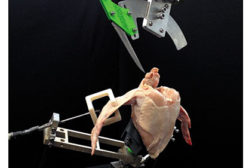Doug Britton , Ph.D.
Doug Britton, Ph.D., is manager of the Agricultural Technology Research Program at the Georgia Tech Research Institute. For more information, visit www.atrp.gatech.edu.
ARTICLES
Get our new eMagazine delivered to your inbox every month.
Stay in the know with The National Provisioner's comprehensive coverage of the meat and poultry processing industry.
SUBSCRIBE TODAY!Copyright ©2024. All Rights Reserved BNP Media.
Design, CMS, Hosting & Web Development :: ePublishing


